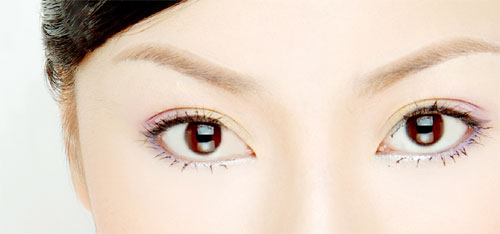The eyelid and surrounding tissues can say a lot about a person. Unfortunately, many of the things that the eyelids say are unflattering. Dark circles under the eyes say that the person is tired or run down. These circles can rob a young person from their fresh face. Bags under the eyes can make a face (and a person) appear to weigh more than they do.
 Sadly the fat that accumulates under and above the eyes is not always linked to the weight of the body; a person can properly diet and effectively exercise but not shed the fat from around the eyes. In another patient group, just over half of all Asians are born with eyelids that do not have a crease or fold (called a pretarsal crease). This can make applying makeup difficult, if not impossible. For these reasons, many people turn to blepharoplasty or eyelid surgery.
Sadly the fat that accumulates under and above the eyes is not always linked to the weight of the body; a person can properly diet and effectively exercise but not shed the fat from around the eyes. In another patient group, just over half of all Asians are born with eyelids that do not have a crease or fold (called a pretarsal crease). This can make applying makeup difficult, if not impossible. For these reasons, many people turn to blepharoplasty or eyelid surgery.
When the fat pads under the eyes (“eye bags”) are to be removed, a small incision is made just inside and parallel to the lower lash line. The skin is separated and most of the fat is gently removed. Since new fat cells are not created, only increase in size, eye bag removal surgery is a very long-lasting surgical procedure.
When the upper eyelids are going to be revised, a line is cut along the pretarsal crease, the large fold in the center of the eyelid. In Asian patients that do not have a pretarsal crease, a strip of eyelid skin is removed to create this fold. If fat is to be removed from the upper eyelid, it is done while the eyelid is surgically open. The eyelid is then closed with usually a small amount of skin removed. This creates a crease in patients that do not have one and corrects ptosis (droopy eye lid) in those that do have a pretarsal crease.
Eyelid surgery may correct the dark circles under the eyes, but it may not. Ask your surgeon about dark circles, if they are a concern for you.
Eyelid surgery is a very delicate procedure with a great deal of art involved. If too much skin is removed the eyelids may not close properly. Also, the fat pads need to be removed gently as to avoid trauma to this sensitive area.
Blepharoplasty is a same-day surgery and local anesthesia is used with an intravenous sedative. Since you are awake during eyelid surgery you must realize that surgical instruments will be used very near your eyes. Some patients have a difficult time tolerating that. The sedation generally relaxes the patient to the point where it is tolerable.
The benefit of an “awake” approach is that it is far easier for the plastic surgeon to determine the amount of skin of the eyelid to removed. The patient can open their eyes naturally and a good estimate can be made. In an unconscious, anesthetized patient, the eyelid droop is actually improved and is underestimated by the surgeon.
Eyelid surgery can last between one to three hours depending on the extent of the procedure and the delicateness of the skin, among other factors. The average cost of blepharoplasty is about $3,000 though this may vary depending on the region of the country and the specific fees charged by your surgeon.
Facility fees, medications, and aftercare items may increase the price as well. Unless the eyelid surgery is being done for a specific abnormality (e.g. eyelids that interfere with vision or do not close tightly), blepharoplasty is paid for out of pocket. Most people can return to work within two weeks and, since the surgery is very long-lasting, it usually only requires one treatment.
